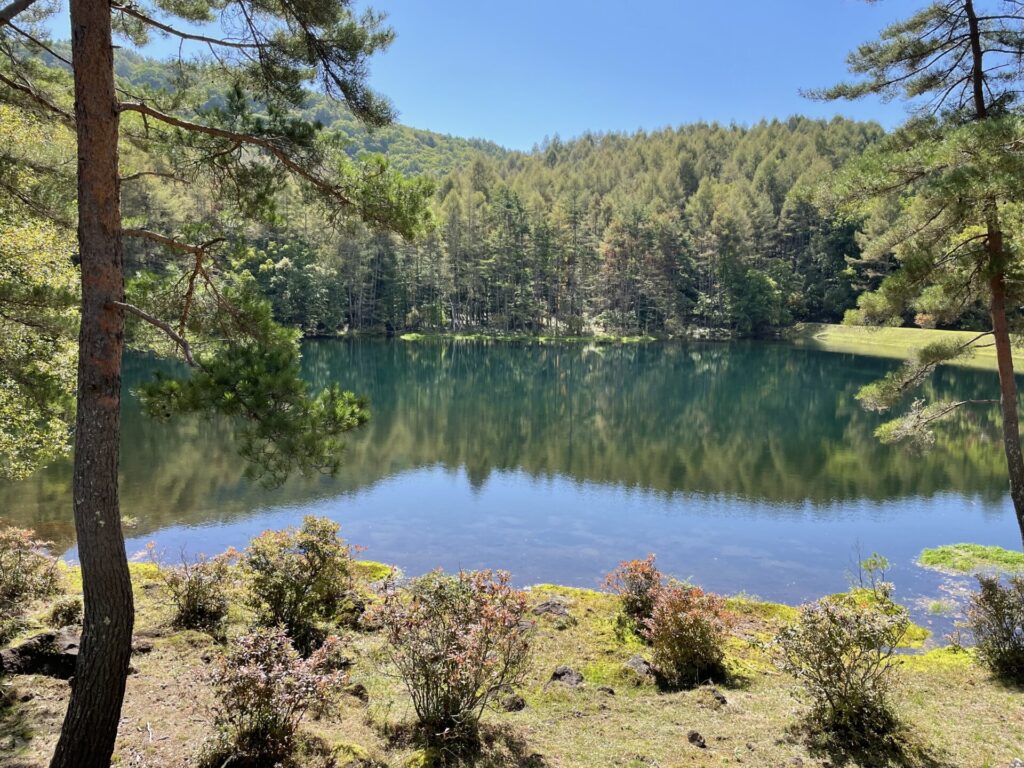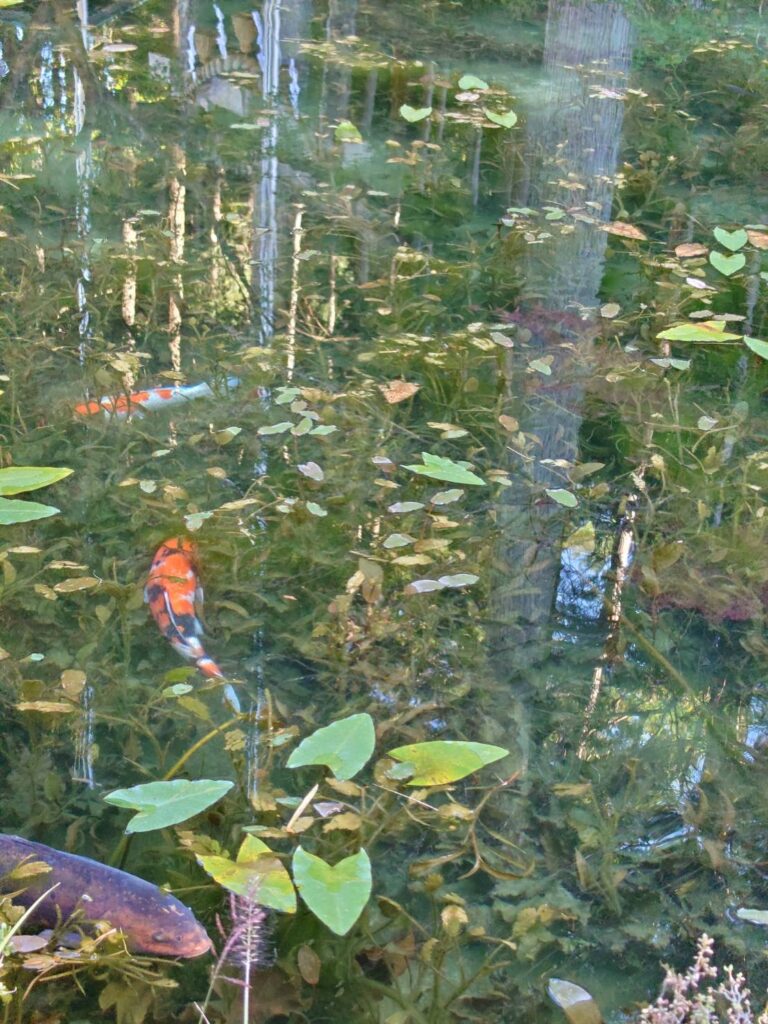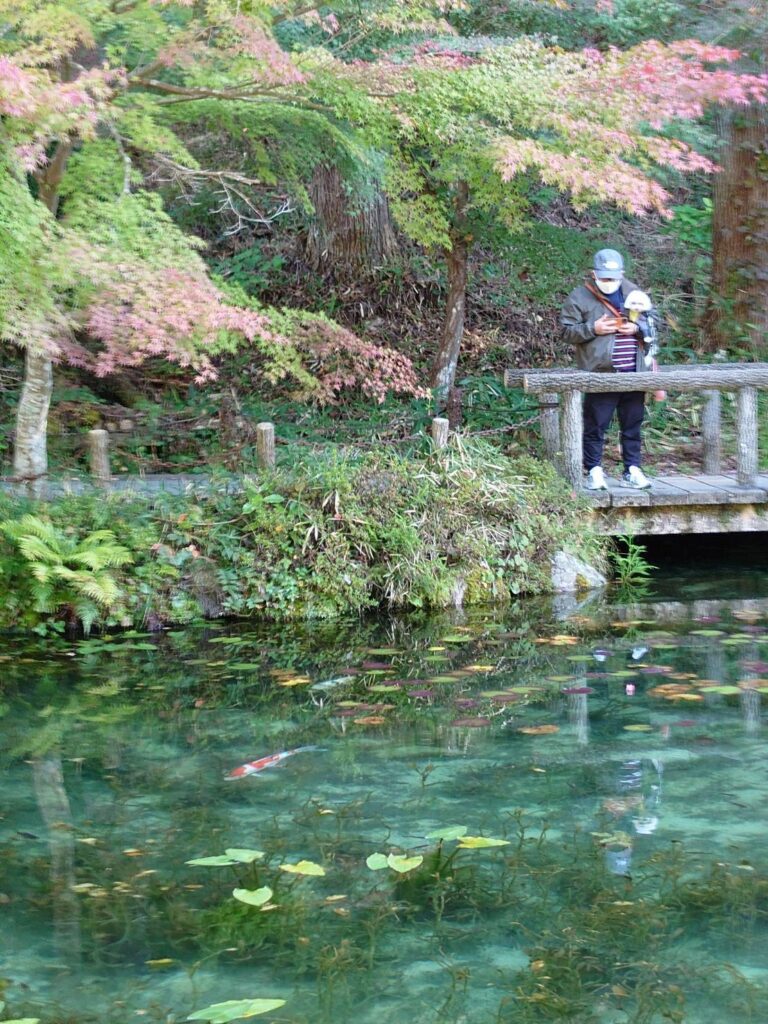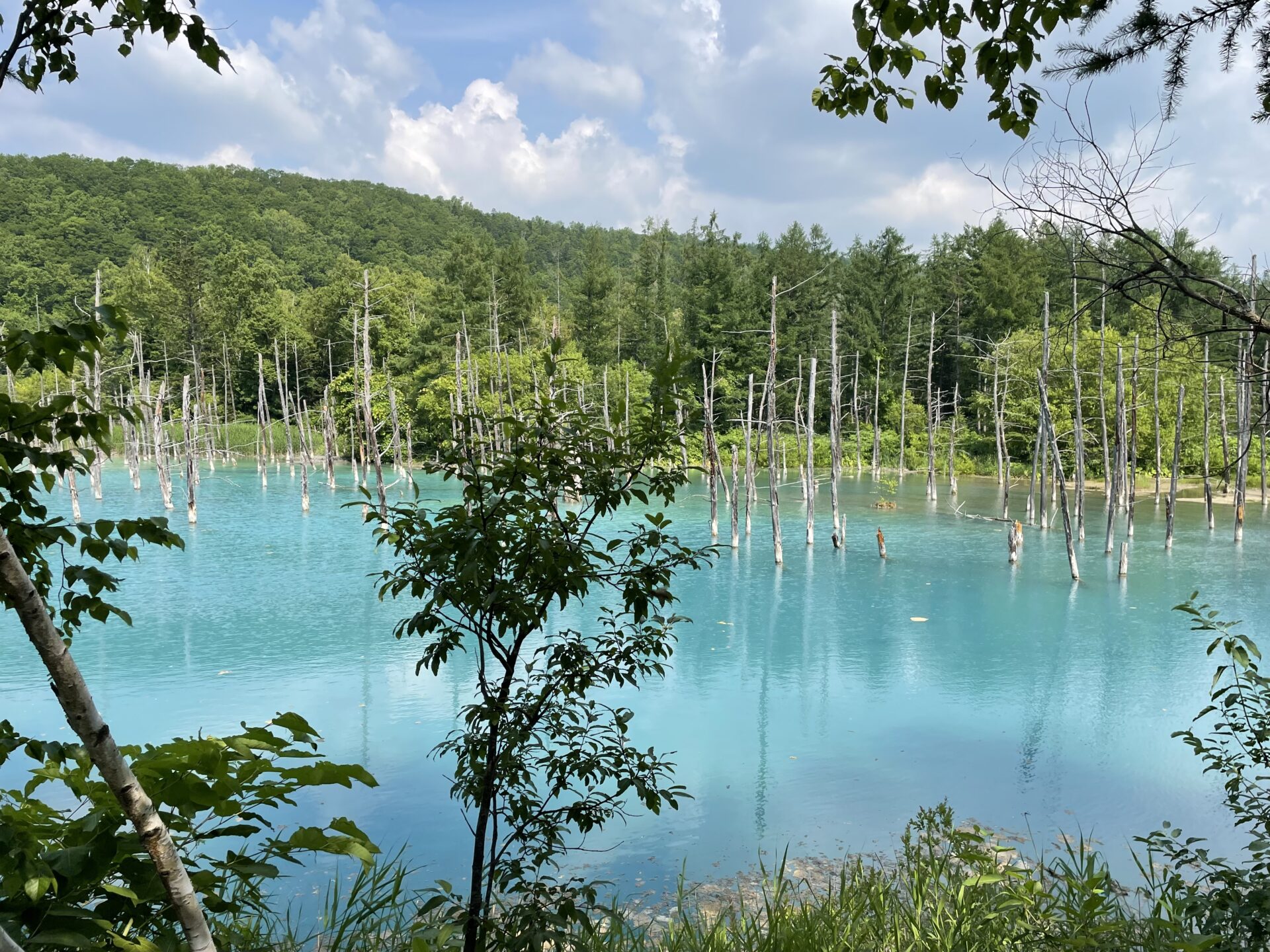Today, I will introduce two beautiful ponds.
Mishakaike

The first is Mishakaike, a picturesque reservoir located in the mountains of Chino City, Nagano Prefecture, at an elevation of 1,500 meters. The calm surface of the water reflects the surrounding mountains, creating a fantastical scene. Its appearance has inspired many, and it is also known for being the motif of the famous painting “Green Resonance” by renowned Japanese artist Kaii Higashiyama. It gained further fame from being featured in a Sharp AQUOS TV commercial in Japan. I visited after seeing the commercial, but it wasn’t as impressive as it appeared in the ad, which was a bit disappointing.
The surrounding larch forest changes dramatically with the seasons. In spring, it is adorned with fresh green leaves; in summer, it turns a deep green; in autumn, it is covered in golden foliage; and in winter, it is blanketed with pure white snow and ice. The pond quietly reflects the scenery of each season, offering a hidden charm with its ever-changing face. Even on the same day, it can look completely different depending on the time, though it’s not a place where you would stay for a long time.
【御射鹿池(みしゃかいけ)/長野県茅野市】
標高約1500mの山あいにある、とっても絵になる貯水池です。水面は鏡みたいに周りの山々を映して幻想的な景色を作り出します。
実はこの池は、東山魁夷の名画『緑響く』のモチーフとしても有名。日本のシャープのAQUOSテレビのCMにも使われて、一躍話題になりました。私もCMを見て行ったのですが、広告ほどの感動は正直なところなかったかな…という感じでした
周囲のカラマツ林は季節ごとに表情がガラリと変わります。春は若葉のフレッシュグリーン、夏は深い緑、秋は黄金色、冬は真っ白な雪と氷に包まれて、池もそれぞれの季節の風景を静かに映し出します。時間帯によっても違った顔を見せてくれるので、長居はしなくても何度も訪れたくなる場所です。
Monet’s Water Lily Pond モネの池


The second pondis the clear “Unnamed Pond” (commonly known as Monet’s Water Lily Pond) at the Nemichi Shrine in Seki City, Gifu Prefecture. It is famous for its stunning, painting-like beauty that seems almost unreal. It is named “Monet’s Water Lily Pond” because it resembles Claude Monet’s series of paintings, “Water Lilies.” The water lilies blooming in the highly transparent spring water are very beautiful, and the elegant koi swimming in the pond resemble Monet’s iconic work. Although it was indeed pretty, it was relatively small, and there wasn’t much else around, which was a bit disappointing. However, since both ponds are free to visit, it wasn’t too much of a letdown.
【モネの池(正式名称なし)/岐阜県関市】
岐阜県関市の根道神社近くにある透明度抜群の小さな池。正式な名前はないけど、モネの「睡蓮」にそっくりなことから「モネの池」と呼ばれています
クリアな湧き水に咲く睡蓮と、優雅に泳ぐ錦鯉がまるで絵画の世界そのもの。実際に見るととってもキレイですが、池自体は思ったより小さめで、周りに特に観光施設などもないのでちょっと拍子抜けした人もいるかも?
でも、どちらの池も入場無料なので気軽に行けるのが嬉しいポイントです
Blue Pond 青い池

Finally, let’s talk about “Aoi Ike” (Blue Pond) in Biei Town, Hokkaido. The Blue Pond is an artificial pond created by the accumulation of water in one of the embankments built along the Biei River to prevent volcanic mudflow disasters from the eruption of Tokachidake in 1988.
True to its name, the pond’s surface gleams with a clear cobalt blue, making it a popular tourist spot known as the “Blue Pond.” Its global fame grew after it was featured as the wallpaper for Apple’s Mac OS X in 2012. The stunning blue color, along with the larch and birch trees submerged and standing dead in the water, creates an even more mystical atmosphere.
Why does the Blue Pond appear blue?
The secret to the pond’s blue color lies in the sunlight and the water’s composition. The surrounding areas, such as “Biei Shirogane Onsen” and “Shirahige Falls,” have water containing aluminum, sulfur, and lime components. When this water mixes with the water of the Biei River (commonly known as the Blue River), it generates “colloids,” which are extremely fine particles invisible to the naked eye. The sunlight that shines on these particles scatters, creating the pond’s mysterious blue hue.
Additionally, the sulfur and lime components dye the bottom of the pond white, which enhances the blue color of the water surface. This mystical color is commonly referred to as “Biei Blue,” and it attracts tourists from both Japan and abroad. If you visit Hokkaido, be sure to check it out.
【青い池(あおいけ)/北海道美瑛町】
青い池は、1988年の十勝岳噴火による火山泥流を防ぐために作られた堤防の一部にたまった人工の池です。その名の通り、コバルトブルーに輝く水面がとっても幻想的
2012年にはAppleのMac OS Xの壁紙にも採用されて、世界的に有名になりました!
水に沈むカラマツや白樺の立ち枯れ木が、さらに神秘的な雰囲気を醸し出しています
どうして青く見えるの?
これは池の水に含まれるアルミニウムや硫黄、石灰成分が太陽の光と反応して「コロイド」と呼ばれる微細な粒子を作り出し、その光の散乱で青く見えるからなんです。
さらに池の底が白く染まっているおかげで、青色がより鮮やかに際立つという仕組み。
この美しい色は「美瑛ブルー」と呼ばれ、日本国内外からたくさんの観光客が訪れています。
北海道に来たらぜひ立ち寄りたいスポットのひとつです!



コメント